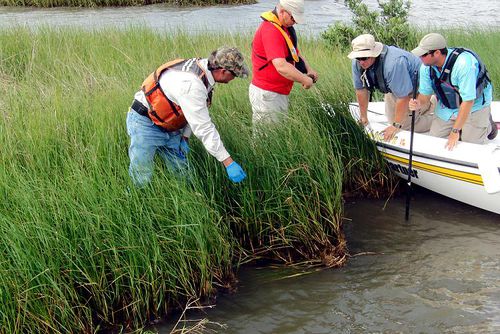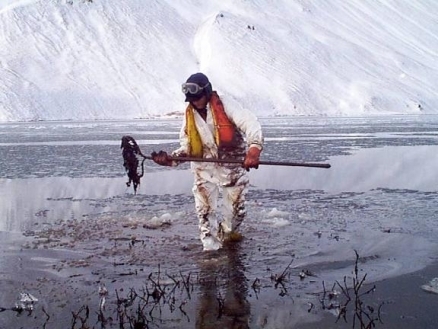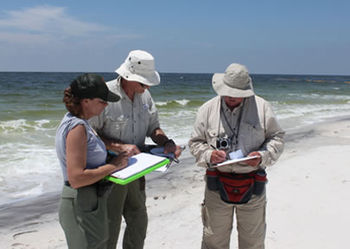Shoreline (Shoreline cleanup assessment technique (SCAT))
Shoreline cleanup assessment technique (SCAT)
Shoreline Cleanup and Assessment Technique (SCAT) is a simple and comprehensive way to perform a survey of an affected shoreline. This systematic approach uses standardized terminology to collect data on shoreline oiling conditions and supports decision-making for shoreline cleanup. SCAT is flexible in its scale of surveys and in the detail of data sets collected.
SCAT is part of the response, and outpaces operations. This process continues past the initial assessment to verify cleanup effectiveness and conduct final evaluations. The SCAT process uses eight steps:
- Conduct reconnaissance survey
- Segment the shoreline
- Assign teams and conduct shoreline surveys
- Develop cleanup guidelines and endpoints
- Submit reports and sketches to Planning Section
- Monitor effectiveness of cleanup
- Post cleanup inspections
- Do final evaluation of [[cleanup] activities]
SCAT teams use team members who are trained in techniques, procedures, and terminology of shoreline assessment. Team members have a thorough understanding of the response goals and objectives and will consider safety concerns in cleanup recommendations. Although they coordinate with division supervisors in the area, they do not direct cleanup workers.
Members of a SCAT team may include:
- Federal representative (usually NOAA Scientific Support Team or Coast Guard)
- State representative
- Responsible Party representative
- Landowner or other stakeholder
The SCAT coordinator directs the activities of the SCAT teams. The SCAT coordinator is also involved with pre-SCAT planning, team calibration, and coordination with planning and operations sections on cleanup recommendations. In addition, the coordinator provides information to situation and documentation units.
SCAT teams collect data using a collaborative consensus-building approach. SCAT team members also prepare field maps and forms detailing the area surveyed and make specific cleanup recommendations. Team members verify the effectiveness of cleanup, modifying guidelines as needed if conditions change.
The responsibilities of the SCAT team include:
- Evaluate oiling conditions
- Factor in [[shoreline] types]
- Identify sensitive resources
- Determine need for cleanup
- Recommend [[cleanup] methods] and endpoints
- Place constraints on cleanup if necessary, due to ecological, economic, or cultural concerns{| width="200" border="1" cellspacing="1" cellpadding="1" align="center"
|  Cleanup team checks for oil in the sediments of a Louisiana marsh. Credit: NOAA
|}
Cleanup team checks for oil in the sediments of a Louisiana marsh. Credit: NOAA
|}

